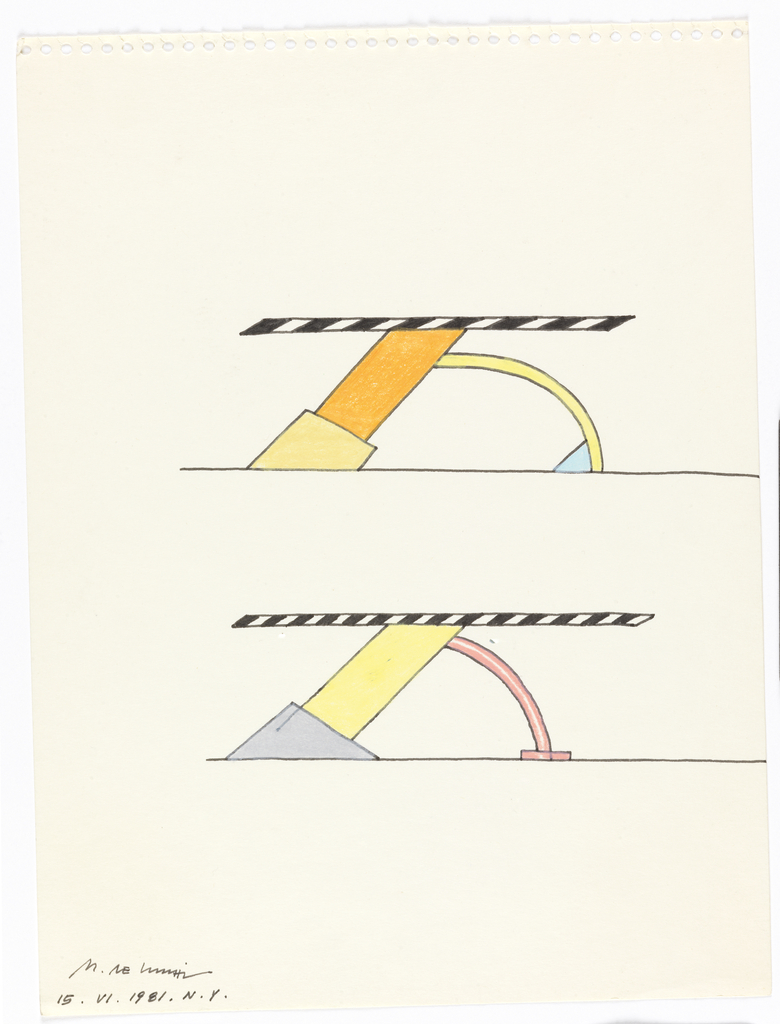In 2011, Italian designer Michele de Lucchi (b. 1951) reflected in an interview, “design is truly a kind of witness to history. Design documents the spirit of the age.” [1] His 1981 drawing of Two Designs for Tables (and Three Designs for Tables) is an example of how design records its historical and cultural context, and reflects the nature of that time.

Drawing, Three Designs for Tables, June 15, 1981. Designed by Michele de Lucchi. Gift of Friedman Benda. 2013-24-7.
De Lucchi has been a prominent figure in the Italian design world since the 1970s, crafting architecture, furniture, lamps, domestic appliances, office equipment, and a variety of other products, and he transforming the ordinary and everyday into the bold and whimsical. He began his radical approach to design in 1978 when he joined the group Studio Alchimia. In 1981, de Lucchi and a number of other furniture and product designers co-founded the Milan-based collective Memphis, which dominated the Postmodern design scene until it was disbanded in 1988.
Memphis believed that design did not have to be enduring; but it should be provocative, fresh, and surprising. The group’s designers questioned the rules and conventions of Modernism. They opposed its pure functionalism and practical rationality, and rebelled against its use of industrial materials and minimalist design. Instead, they unashamedly played with kitsch motifs and gaudy colorful laminates, creating a revolutionary visual language inspired by popular culture and embracing mass media.
During his involvement with Memphis, De Lucchi explored the relationship between color, form, and type. As this drawing depicts, he played with elementary forms in untraditional ways, and contrasted winsome pastel colors with hard black-and-white geometric patterns. With a focus on vivid colors, artificial surfaces, and animated forms, de Lucchi’s table designs record and reflect the spirit of the materialistic 1980s and the decade’s superficiality, exuberance, and excess.
